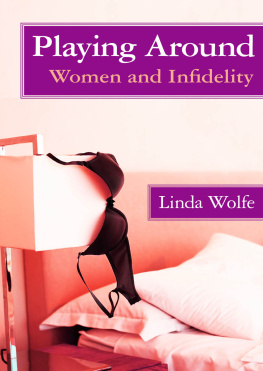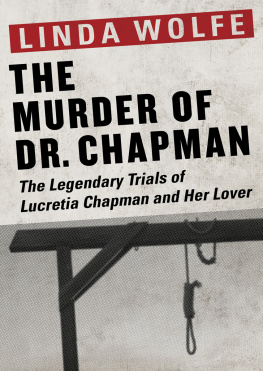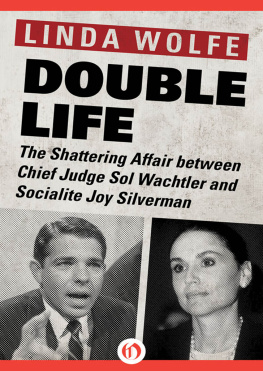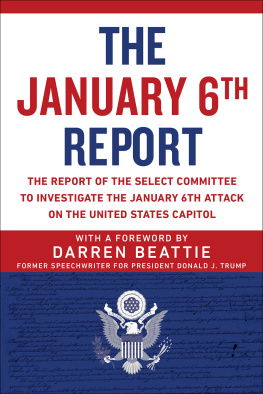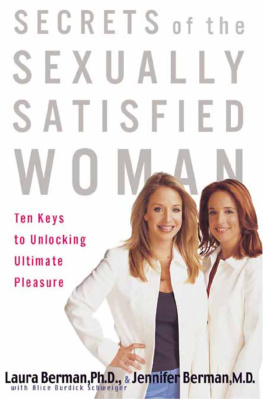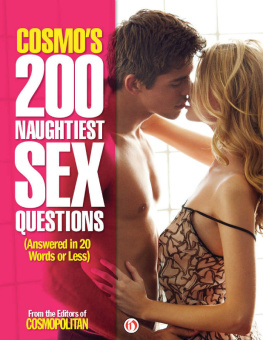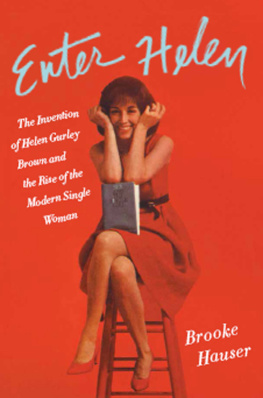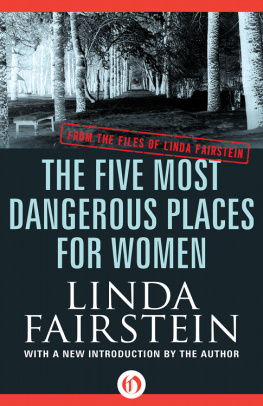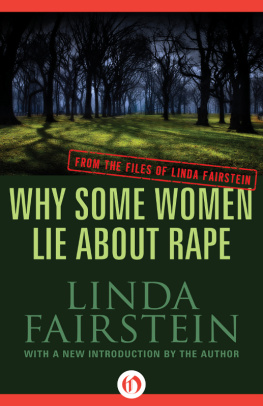FOREWORD
Why would a magazine conduct a sex survey? The answer may seem obvious: simply to find out about the sex-lives of its readers. Something obvious, however, frequently only seems obvious laterafter youve finished the job and it works. The best magazine ideaslike ours for the survey and the Burt Reynolds centerfoldsometimes seem to float in, rather than arrive in a brilliant flash because the magazine needs a blockbuster and the staff is exhorted to produce one. The sex-survey idea just floated in one Tuesday afternoon at our regular staff meeting when editors, art directors, production and copy people read article ideas out loud to each other, this winner contributed by senior editor Myra Appleton. Between the time Myra suggested it and the surveys appearance in Cosmo, exactly six years went by. Why so long? Well, probably because Cosmos editor (me) just isnt very research-oriented and the idea of compiling a questionnaire on any subject, even one as fascinating as sex, binding it into the magazine, persuading readers to cooperate by filling in answers and mailing these back to us, then tabulating responses and trying to make sense of what everybody said, seemed to me, on first hearing, about as do-able and interesting as digging up Central Park. Nevertheless we went so far as to compile a questionnaire. Everybody contributed questions, so we had hundreds for Myra to work with. At that point I put the survey away, to ripen, you might say, for six years, then in the summer of 1979 it seemed to me its time had come. How do you decide these things? I dont knowyou just have feelings. So we got the survey out again, perfected it deciding whether to state the multiple-choice questions first-person, second-person, whatever, adding new ones we hadnt thought of before and organizing them into categories. We also decided to run the survey as a regular Cosmo article (January 1980) rather than as a perforated tear-out with return postage guaranteed. That saved us money but required the reader not only to answer seventy-nine questions, scissor the pages out, put them in an envelope and address it, but add her own postage. I wrote a personal message exhorting her to do just that, telling her how wonderful it would be if she would share her sex-life with other Cosmo readers so we could see just how far the sexual revolution had brought us and if everybody was having more sex and enjoying it more, having more sex and enjoying it less, or whatever combination of frequency and reaction might become known.
What a response! For weeks the Simmons Market Research Bureau, the research organization Cosmo engaged to handle the survey, would call nearly daily to say, You wont believe this Weve got a roomful of mail that looks like the blizzard of eighty-eight and its still pouring in. I had my picture taken sitting on a stack of questionnaires that reached nine feet high. After eight weeks, when we finally stopped counting, more than 106,000 Cosmo readers had filled in and mailed their sex-survey questionnaires to us. Then came the task of interpreting the findings. Linda Wolfe, author, behavior and science writer and a fine writer generally, was engaged to study the results Simmons had compiled for us, plus read the hundreds of personal messages scrawled in the margins of many of the questionnaires and to prepare an article (an excellent one that we published October 1980). Everybody wanted to talk sex-survey on television. After all, this was the biggest response to any magazine survey in history and surely the largest sex survey ever conducted. Alfred Kinsey based his statistical calculations for Sexual Behavior in the Human Female on interviews with 5,940 women; Shere Hite, in her Hite Report on women, on about 3,000 responses; and Masters and Johnsons research for Human Sexual Response was conducted with only 382 females, 312 males. To continue comparisons, the Roper Poll samples only about 2,000 people, Harris 1,250. Qualitatively, surely it would be revealing and important to know about the sex-life of the Cosmopolitan reader, such a participator in the sexual revolution but also such an exemplary citizen (Cosmo women do not live through other people but achieve success by unrelenting hard work on their own). The Today show, Tonight show, Merv Griffin, Mike Douglas, John Davidson and dozens of others all investigated (and dissected) the Cosmo Sex Survey. One of my happiest memories is toasting in the sun in the Rose Garden Amphitheater in Portland, Oregon, being interviewed by Phil Donahue on his extraordinary television program and interrogated by that fantastic audience he draws. (Why would 68 percent of our readers have a sexual experience on a first date and not consider themselves promiscuous? Why would more than half of the married women have engaged in an extramarital affair? Biggest challenge: describing the missionary position to one perplexed audience member who swore she didnt understand it.)
So now the survey, comprehensively, clearly dealt with and interpreted in this excellent book by Linda Wolfe, is here for all of us to read and study. If Cosmo survey-participants are a little more active sexually than the country as a whole (and we dont know that to be true), its somehow reassuring to know that a whopping 92 percent said they prefer sex with commitment (even though 55 percent have made love on their lunch hour). Read, enjoy and, one hopes, profit with us from The Cosmo Report
Helen Gurley Brown
INTRODUCTION
We have been living through turbulent times. We have had, as anyone canand often relentlessly doestell you, a sexual revolution.
But what exactly does this mean? What exactly are people doing today that they didnt do yesterday? (How different are those things, anyway?) Has the revolution lived up to its promises, met peoples hopes and fantasies? (What are those hopes and fantasies?) Has it disappointed them, made them yearn for yet a new sexual order? (If so, what caused their disappointment?) And for that matter, what about you and me? Are our sexual practices and feelings typical? (Typical of whom?) Are we in tune with the times, or woefully behind or eccentrically ahead of them? (Where do we fit in? Is there some way we can measure ourselves?)
As a writer who often explores contemporary behavior, I had for a long time been curious about questions like these. But they seemed impenetrable. There just wasnt enough solid information to allow for satisfying answers. It was not that there werent plenty of books and articles purporting to measure Americas sexual revolution. But they were invariably subjective accounts, or reports based on small, and usually homogeneous and highly special groups of individuals. No large-scale detailed survey of contemporary sexual practices and attitudes had been conducted on a vast group of diverse Americans. So although I was deeply interested in the sexual changes that had taken place in America since my college days in the fifties, I had more or less given up hope of ever being able to write about them.
Then, a year and a half ago, an editor from



